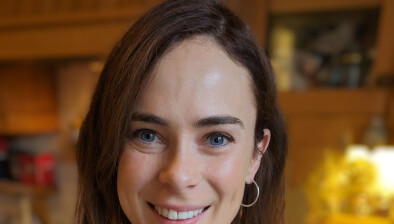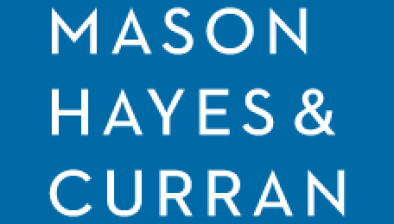Rebecca Conlon: Expert evidence and the Dunne principles

Rebecca Conlon
Rebecca Conlon, consultant in the healthcare team at Hayes solicitors, examines the recent High Court decision in Anne Marie Clifford v Heath Service Executive & Kerry General Hospital.
In December 2019 the High Court dismissed the claim of a Plaintiff who alleged a delay of 36 minutes in transferring her to theatre when she began to bleed after the birth of her daughter in 2012.
Mr Justice Cross, having considered all of the evidence, to include the expert evidence and the factual evidence of two of the treating clinicians, concluded ultimately that the defendant was not negligent. Notably, Mr Justice Cross noted obiter that on the balance of probabilities causation would have been established, albeit that this was an “unnecessary speculation” given that the Plaintiff had not fulfilled the test for negligence as set out in Dunne v The National Maternity Hospital [1989] IR 91 (the “Dunne” test).
This decision serves as a reminder to practitioners acting in clinical negligence matters as to how evidence in relation to the Dunne principles will be interpreted and considered. Arising from this decision, it would appear that the Court will assess the totality of the evidence – both factual and expert - and decide whether negligence has been established, even where the precise wording of the principles is not strictly followed.
Test for negligence
The requirements for clinical negligence to be established as set out in Dunne can be summarised as follows:
- The true test for establishing negligence in diagnosis or treatment on the part of a medical practitioner is whether he has been proved to be guilty of such failure as no medical practitioner of equal specialist or general status and skill should be guilty of if acting with ordinary care;
- If the allegation of negligence against the medical practitioner is based on proof that he diverted from a general and improved practice that will not establish negligence unless it is also proved that the course he did take was one which no medical practitioner of like specialisation and skill would have followed had he been taking the ordinary care required from a person of his qualification;
- If a medical practitioner charged with negligence defends his conduct by establishing that he followed a practice which was general and which was approved of by his colleagues of similar specialisation and skill he cannot escape liability if in reply the plaintiff establishes that such practice has inherent effects which ought to have been obvious to any person giving the matter due consideration.
Clifford case
On the 26th May 2012 Mrs Clifford attended hospital at 40 weeks gestation. Following a difficult delivery, she gave birth to a baby girl at 14.54 on the 28th May 2012.
During delivery Mrs Clifford sustained a small second-degree tear. A Senior House Officer was called to repair the tear and noted further vaginal bleeding. A massage was carried out as it was thought the uterus was not well contracted. Intravenous Oxytocin was also administered, and large blood clots were expelled.
An Obstetric Registrar was asked to review Mrs Clifford at 15.08 on account of the bleeding and the following steps were taken:
- At 15.24 the registrar attended.
- At 15.27 Mrs Clifford’s blood pressure was recorded as 56/38 – dangerously low.
- At 15.36 Gelofusine was administered
- At 15.44 blood samples taken. Despite suturing the bleeding continued.
- At 15.48 the consultant was called.
- At 16.04 the consultant ordered vaginal packing to stem the bleeding. However, the bleeding continued.
- At 16.25 it was agreed that Mrs Clifford should be brought to theatre.
- At 16.37 Mrs Clifford was transferred to theatre.
- At 17.25 the operation commenced and completed at 19.15.
Operative findings included a large perineal haematoma, a second-degree perineal tear, a well contracted uterus and a right paravaginal tear. Estimated blood loss prior to transfer to theatre was 1 – 1.5 litre and intraoperatively 1 litre.
Mrs Clifford alleged delay in being transferred to theatre following delivery when the bleeding was identified causing an unnecessarily traumatic experience and increased blood loss.
Expert evidence
The evidence of the obstetric expert for the Plaintiff was that the bleed was life threatening and the steps taken in an attempt to stop the bleeding were not taken with sufficient speed and sense of urgency culminating in a 36 minute delay and an unnecessarily traumatic experience.
While the Defendant’s expert conceded that the steps would have been taken more rapidly in a major national maternity hospital, he argued that the treatment was adequate for a community hospital in 2012 with an appropriate escalation of protocols following a bleed.
However, the Plaintiff’s expert counter argued that a delay of 36 minutes, albeit short, cannot be disregarded and the blood loss and the trauma are likely to have been less but for the delay. This in his view was indicative of breach of duty.
Decision of Mr Justice Cross
The Plaintiff’s claim was dismissed by Mr Justice Cross on the following basis:
- The Defendant followed the approved practice of a regional hospital at the time;
- The Plaintiff had not demonstrated under the third part of Dunne (above) that this practice had inherent defects which ought to have been obvious to any person giving the matter due consideration;
- The Plaintiff had not established on the balance of probabilities that the defendants were guilty of a failure such as no practitioners of equal specialist status or skill would be guilty if acting in ordinary care;
- Mr Justice Cross accepted the evidence of the Defendant’s expert that while the reactions of the hospital were not as rapid as would occur in a major maternity hospital, they were still not unacceptable;
- Of note, Mr Justice Cross held that it is not necessary for a finding of professional negligence for an expert witness to follow the wording as set out in Dunne. It is for the Court to assess whether the evidence in its totality meets that test.
Commentary
This decision provides helpful commentary in relation to the manner in which expert testimony will be considered, particularly in the context of adherence to a particular test. The judgment of Mr Justice Cross highlights that expert evidence will be considered in its totality, as opposed to be adjudged strictly on the basis of a formula of words.

- Rebecca Conlon is a consultant in the healthcare team at Hayes solicitors.






